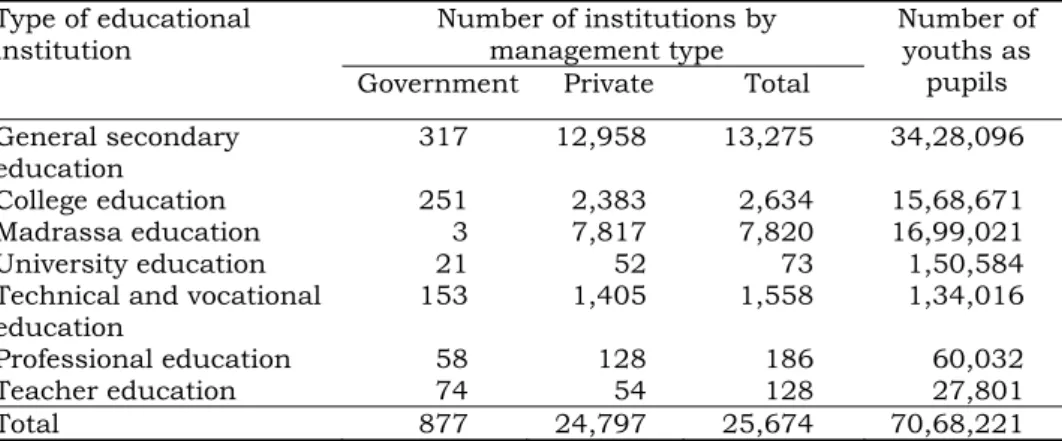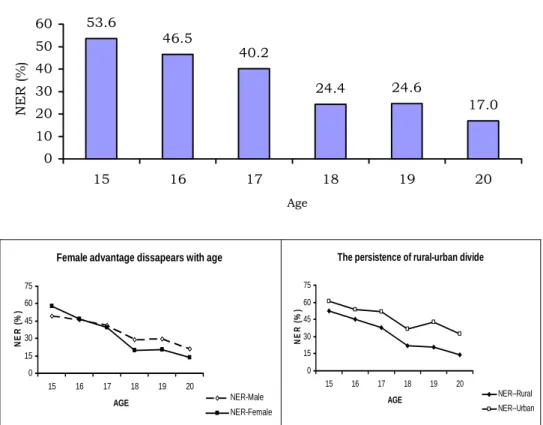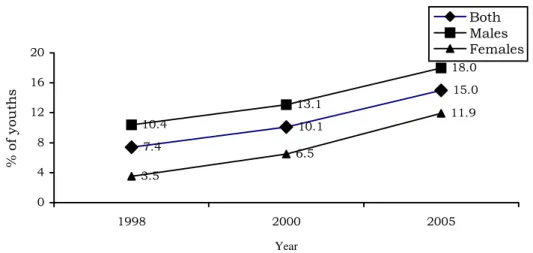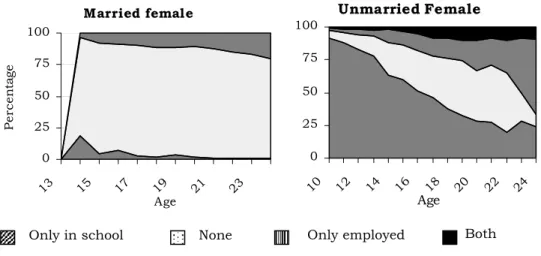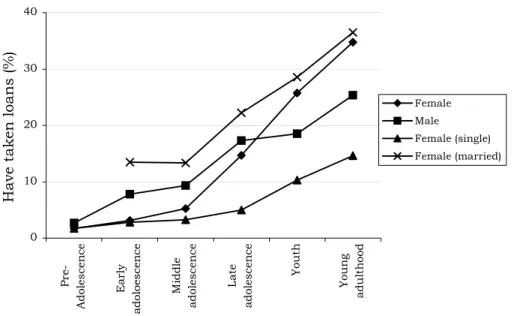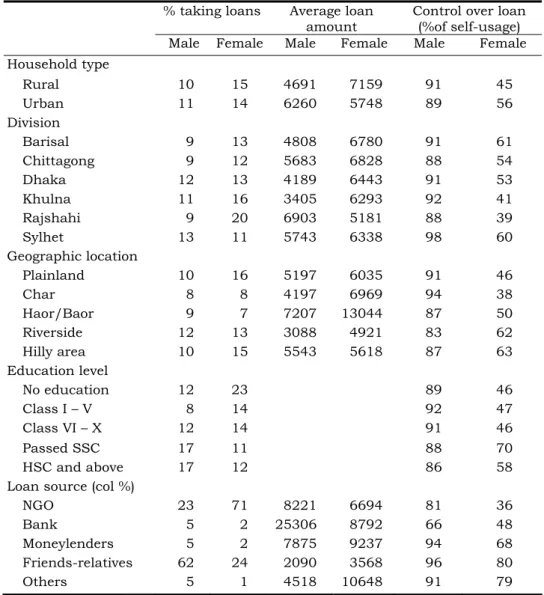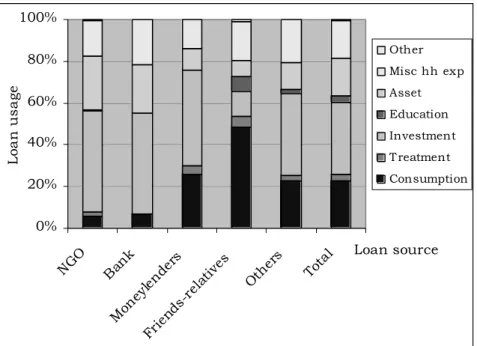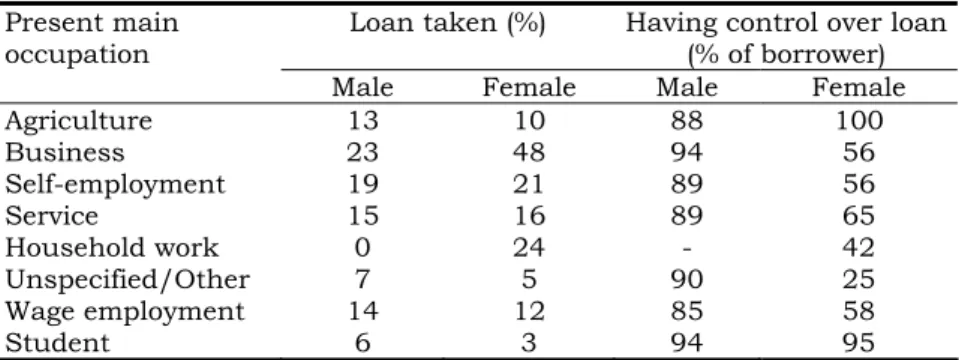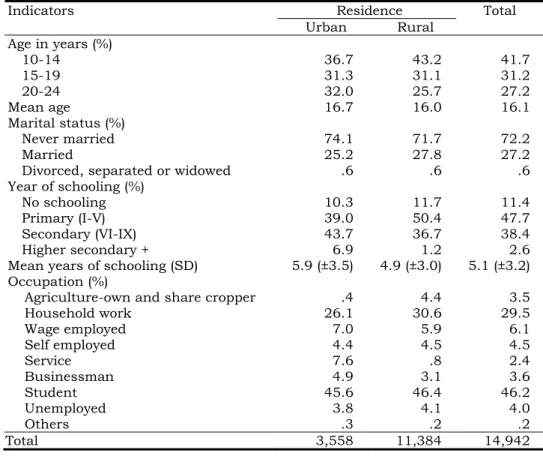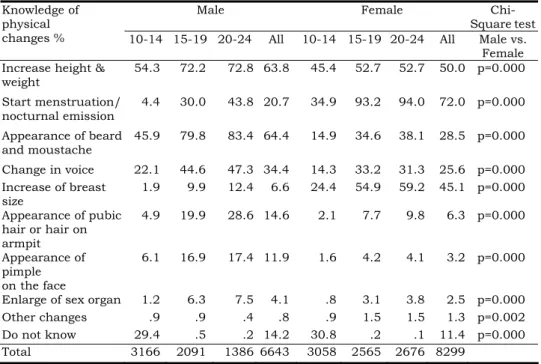These are respectively 51.7% and 30.5%, in total 82.2%, of the total number of educational institutions for youth. Among those aged 20, only 13.5% of women and 20.8% of men were currently enrolled in an educational institution. A steady improvement has been observed in the education of the young people over the last seven years (fig. 3).
In 2005, a quarter of youth aged 15-20 in Barisal division were currently enrolled in madrassas. A steady improvement in literacy rates was observed over time across all age groups of youth.

A Day in the Life of a Bangladeshi Adolescent: Using Time Use Data
Urban girls spend the largest proportion of time on media (watching TV and listening to the radio), followed by urban boys. City girls spend almost half the time traveling compared to rural boys. City boys have to spend much more time traveling than country boys – the difference is over 11%.
Before marriage, girls spend more time socializing but less time on leisure compared to after marriage. Unmarried girls in this category spend less time on housework (about 30%) and more time on leisure.
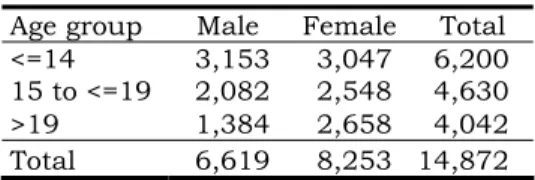
Transition to the Labour Market: What Opportunities does it Hold for Adolescents
The transition from school to work is explored in the first part of the next section. The school-to-work profiles were very different across boys and girls in the rural and urban regions. In urban areas, boys from relatively disadvantaged households participated more in the labor force compared to similar households in rural areas.
Age appeared to be an important factor in the transition from school to work among both male and female adolescents. However, returns to schooling appear to be low in the form of a lower probability of obtaining paid employment and significantly reduced for both boys and girls. Financial market participation had only some influence on the school and employment decision of the male adolescents.
These sharp changes in labor market participation may have resulted from differences in opportunities for these groups of teenagers. Over half of the women involved in some income-earning activity reported housework as their main occupation. In rural areas, adolescent males were involved in agriculture, while urban males were mainly employed in the service and business sectors.
This section focuses on adolescents' anticipation of the choices available to them in the labor market, as shown in Table 5. About half of the adolescents aspired to work in the service sector in the future in order to earn a living. to earn income. About a third of adolescents working in the service sector would prefer to leave because of business.
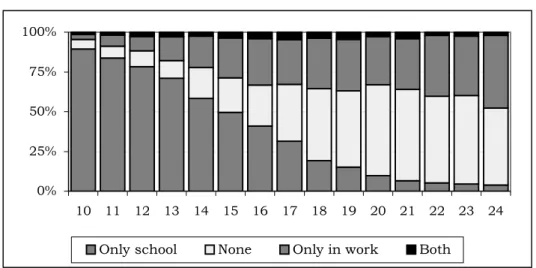
Growing up and Reproducing: Knowledge and Practices of Young People in
Bangladesh
Showkat Gani and Syed Masud Ahmed
To date, most of the knowledge about adolescents in Bangladesh has come from small-scale studies or large-scale studies with a limited focus (ACPR 2003). Basic socio-demographic information of the population covered in this study is shown in Table 2 according to age, marital status, literacy and occupation. About 1/3 of the study population received prior advice on these issues, 1/4 experienced problems while only 7% discussed these problems with a physician (Table 5).
Approximately 67% of the study population was aware of emotional changes during adolescence, men significantly more than women (p=0.000) (Table 6). Marriage and marriage-related information of the adolescents and young people studied are presented in Table 7 and Table 8. For all methods except condom, the knowledge of the female population was clearly higher than that of the male population (p<0.001).
Overall, 78% of respondents received two or more TT injections during their first pregnancy, while another 12%. Compared to antenatal care, a smaller proportion of respondents (18%) reported on postnatal care at the first birth of a child, both for mother and child. This report analyzed data on adolescents' and young adults' perceptions of the physical, emotional, and sexual changes that occur during adolescence, as well as reproductive issues such as marriage, pregnancy, and family planning.
There is an unmet need for information on reproductive health, as the family, schools or existing health systems do not currently meet this need of adolescents and young people. While the proportion of respondents (ages 12-24 years) who began having children (aged 18 years or younger) was nearly double in the 2005 adolescent survey compared to the proportion of women aged 15- 19 years of age who had started having children, published in a 2001 report by the BMHSMS (NIPORT, ORC Macro, JHU and ICDDR,B 2003), the median age was found to be nearly the same in both studies. Thanks are also due to the adolescents and young people who participated in the study, whose cooperation made the study a success.
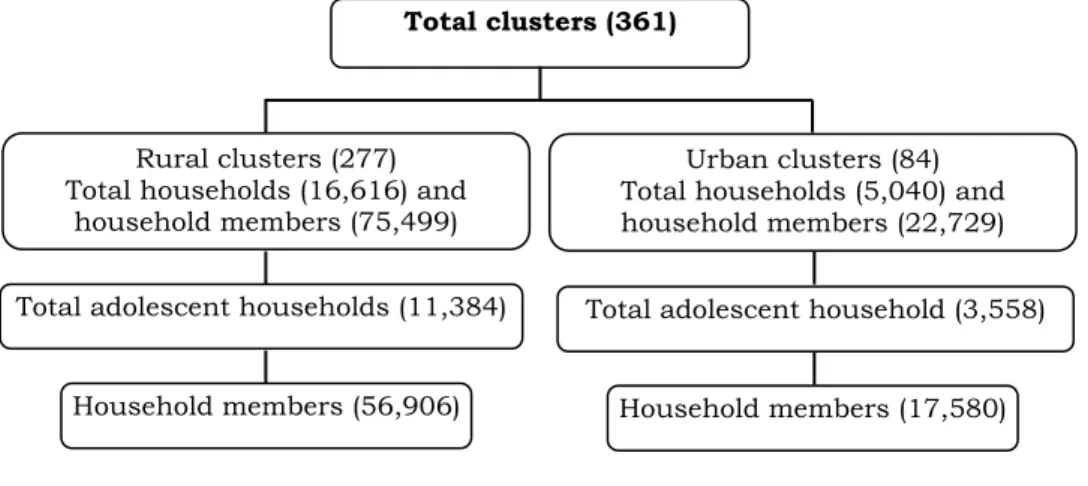
Morbidity, Health-seeking Behaviour and Life-style Characteristics of the
Adolescents
National-level data are needed to design an informed intervention for the adolescents' health, education, and livelihood aspects. This paper reports findings on the morbidity prevalence, health-seeking behaviors, and lifestyles of the adolescent from this study. Overall, the majority of sick adolescents resorted to self-care (32%) or sought help from drugstore salespeople (35%).
Males were more knowledgeable than females. p<0.001), with knowledge increasing with age in the case of the former. The majority of female youth (91%) believe that 'purdah' is necessary when entering the public sphere (Table 11). The young people's partner and friends in public places by age and gender (multiple answers).
The health-seeking behavior of the study adolescents observed in this study is broadly consistent with that observed earlier for disadvantaged population groups (Ahmed 2006), with one important exception. The greater level of knowledge and awareness observed among the males is plausible, given the greater exposure of the male adolescents to the outside world compared to the females in the context of Bangladeshi society. In this study, the majority of the adolescents projected her/himself as the desired role model (proportion increasing with age) which is not consistent with studies elsewhere (Yancey et al. 2002; Harris Interactive 2002).
Citing respected professionals (more by men) and teachers (more by women) as the next best indicates their perceived status and influence in society in the eyes of the adolescent. In conclusion, it can be said that the survey revealed interesting findings on selected aspects of health and lifestyle of the adolescents. 4 Adolescent's health and development in the context of the Convention on the Rights of the Child.
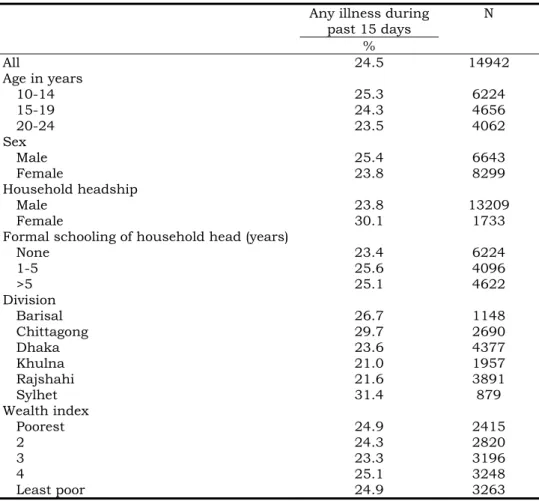
Dowry and the Transition to Marriage
She argues that the present-day practice of dowry in South Asia must be seen as a product of colonial policies. Demand is what the groom's side requires of cash and kind from the bride's side. This applies to both the low and the high end of the economic scale in the village.
However, it is not common to give the dowry at the time of the wedding. Demanding is a transaction associated with the initiation of a marriage contract, and it goes from the bride's side to the groom's side. This suggests that demand is the right of the husband and mohr is the right of the wife.
Therefore, we see that while the claim is seen as the right of the bridegroom, the right to mohr depends on whether he has received his right; a request and a responsible woman. We were told that the most common practice in Domar is for the groom's father to take the portions of the dowry given before the wedding. Granting the request is not only seen as a security measure in case of marriage failure, but also as a measure to avoid divorce.
One factor is that the groom's father usually receives the portion of the demand given at the time of the wedding. 2 Even if a claim is not requested at the time of the wedding, the claim may come later, sometimes several years after, so this strategy is not necessarily successful in the long run (Rashid 2005). It can also happen if a girl is not married when she has become an adult in the eyes of the local community.
Early Marriage in Bangladesh
An Examination of the
Social Institutions and Processes
The role of dowry, and . v) The role of the Ghotok (marriage broker) in the marriage process. Another perspective on freedom of choice in marriage also points to the inability of girls to leave a marriage, as seen in the case of Shirin from Chapai Nawabganj. Role models in the young girls' lives also play a key role in marriage decisions.
The whole process of the marriage (including paying the dowry, holding a marriage ceremony and giving away the daughter) was completed in three days since the proposal was presented to Bimala's family. Thus, the time spent negotiating a marriage largely depends on the economic condition of the family and regional norms in the community. In addition, our conversation with Beauty's family and neighbors brought up an important theme in the marriage process.
There are several connections between dowry, the economic well-being of the family and the timing of marriage as will be discussed below. This is well illustrated in the case of Beauty's family in Chapai Nawabganj, who paid no cash money as dowry to the groom's family. Second, for the poorer families across the regions, dowry is the main consideration in the marriage of their daughters.
In the case of the girl's bride's family, the Ghotok approaches the family independently when they have a boy who wants to get married. Some findings of this qualitative study suggest that the cultural practices of rural Bangladesh largely determine the marriage process and govern marriage institutions. As stated in the data, for most poor families, the time it takes to marry off their daughters is equivalent to the time it takes to collect a dowry for their daughters' marriage.
Youths’ Access to Mass Media in Bangladesh
Proportion of youths (aged 15-35 years) having access to media by residence and sex
Proportion of youths (aged 15-35 years) having access to media by age and sex
Proportion of youths (aged 15-35 years) having access to media by various levels of literacy skills
